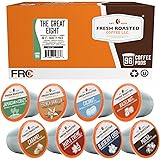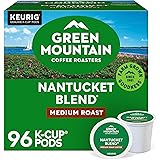Mastering Efficiency: 6 Essential Barista Tips for Smoother Shifts
Are you a barista constantly seeking ways to streamline your workflow and make your shifts, especially those demanding closing routines, significantly easier? The video above offers valuable insights into boosting your productivity behind the counter. This accompanying article expands on those practical barista tips, diving deeper into how these simple adjustments can transform your daily grind into a more efficient and less stressful experience, ensuring you become a truly efficient barista.
Every day, countless tasks are performed in a coffee shop, many of which can feel repetitive or time-consuming. By implementing a few strategic habits, however, significant improvements can be made. From managing your energy levels to organizing your workspace, these techniques are designed to help any barista, particularly those handling the crucial closing duties, achieve peak performance and maintain exceptional customer service.
1. Prioritizing Hydration for Sustained Barista Performance
Maintaining energy throughout a busy shift is paramount for any barista, and sometimes the simplest solutions are the most effective. Instead of relying solely on caffeine, a consistent intake of water can be incredibly beneficial for alertness and focus. It is often forgotten that dehydration can quietly sap your energy, leading to a noticeable drop in productivity.
Consider the impact of regularly consuming water, with a goal of around three 24-ounce cups during a typical shift, as highlighted in the video. This commitment to hydration can act as a natural energy booster, ensuring that your mental and physical stamina remain high. Imagine how much more smoothly tasks would be completed if fatigue was less of a factor, allowing you to maintain a steady pace without the afternoon slump.
2. Proactive Stock Checks to Prevent Mid-Shift Scrambles
Starting a shift with a clear understanding of your available resources is a cornerstone of barista efficiency. A quick, yet thorough, check of essential stock items upon arrival can save considerable stress and time later on. This initial assessment ensures that critical ingredients and supplies, such as sufficient milk reserves or readily available whipped cream, are in place, preventing any unexpected shortages during peak service.
While minor items like sugars and sleeves might be best restocked later, focusing on bulk ingredients and key operational items like pitchers or hot water availability is crucial. Imagine if a sudden rush of Americano orders arrived, and the hot water system was not functioning or milk was running critically low. A few moments spent early in the shift can prevent such disruptive scenarios, allowing for a seamless flow of service.
3. Streamlining Cash Management with Organized Tills
Efficient cash handling is often overlooked as a time-saving strategy for baristas, especially when facing the nightly till count. Organizing your cash drawer by facing all bills in the same direction sets a professional standard and makes transactions smoother. Furthermore, the simple act of grouping bills can significantly reduce the time spent counting at the end of the night.
For instance, rubber-banding single dollar bills into bundles of $25 or fives into $100 batches means that when closing time arrives, the arduous task of counting hundreds of individual bills is replaced by quickly tallying bundles. Naturally, a small amount of each denomination should be left ungrouped for immediate change, but this method ensures the bulk of the cash is pre-counted and ready. Imagine the collective time saved across a week, or even a month, if every closer adopted this simple yet effective system, transforming a tedious task into a swift process.
4. The Red Bull Trick: Optimizing Drink Preparation
For coffee shops that serve Red Bull-based beverages, an ingenious trick can dramatically speed up preparation during busy periods. Instead of manually holding each can as it pours, a simple adjustment allows the can to effectively pour itself. This method is particularly useful when multiple orders need to be prepared simultaneously, maximizing a barista’s multitasking capacity.
By carefully cracking open the Red Bull can and positioning the tab at an approximate 45-degree angle on the rim of the cup, the liquid can be allowed to pour autonomously. This liberates your hands to begin working on another drink, such as steaming milk or pulling espresso shots. Imagine the advantage of having a Red Bull drink pouring itself while you are simultaneously crafting a latte, cutting down on overall service time and enhancing the customer experience through quicker delivery.
5. Harnessing the Power of Soaking for Effortless Cleaning
Cleaning is an unavoidable part of a barista’s daily routine, but it doesn’t have to involve strenuous scrubbing or wasted effort. For items that tend to accumulate stubborn residues, like Crock-Pots or steam pitchers, the simple act of letting them soak can be a game-changer. This strategy leverages time rather than brute force, making cleaning far less arduous.
By immersing a dirty item in hot, soapy water for just five to ten minutes, any caked-on grime is significantly loosened. While the item soaks, other tasks can be addressed, such as wiping down counters or restocking shelves. Imagine returning to a Crock-Pot where residue can now be effortlessly wiped away with minimal scrubbing, preventing the need for excessive physical exertion and making the closing routine much more manageable.
6. Strategic Simplification of Equipment for Slower Shifts
Understanding the rhythm of your coffee shop’s daily flow is key to optimizing your workspace, particularly during slower afternoon or evening shifts. While mornings typically demand a full array of equipment, such as multiple blenders or numerous mixing spoons, these needs significantly diminish as customer traffic slows. Strategic simplification can drastically reduce end-of-shift cleaning responsibilities.
By proactively cleaning and putting away unused equipment, such as reducing the number of blenders from four to one (especially in winter when blended drinks are less popular) or limiting available spoons, the volume of items requiring attention at closing is minimized. This not only makes the cleaning process more efficient but also creates a less cluttered work environment. Imagine the satisfaction of a quicker cleanup because fewer items are left to be washed, contributing to a smoother, more efficient barista closing routine and a faster exit at the end of the day.







